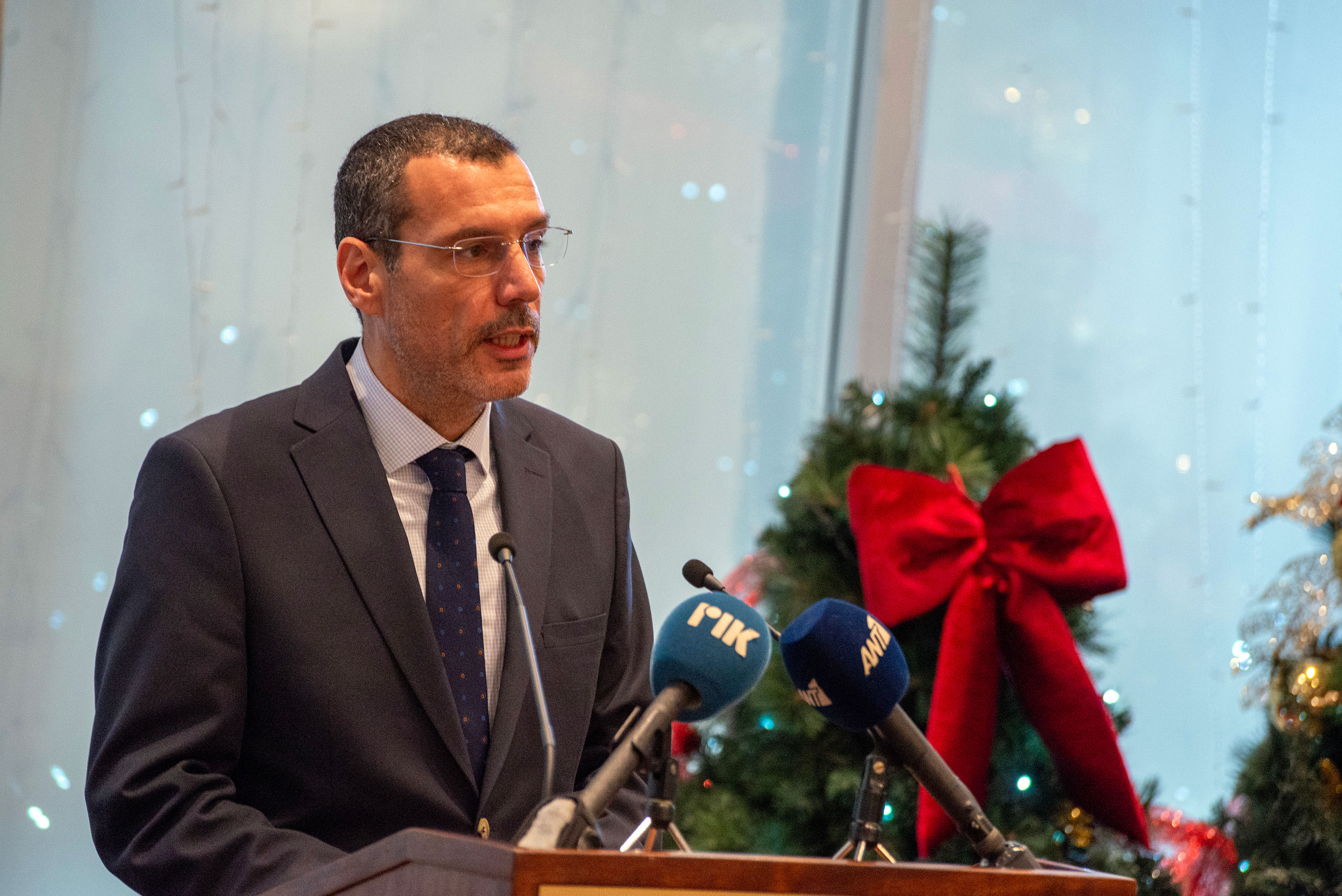By Christiana Tourapi
In April 2023, Dr Ime Akanyeti, Dr Beste Oymen, and Enalia Physis Environmental Research Centre embarked on a journey to identify and quantify the pesticides in the marine environment of Cyprus, via the EU-funded bicommunal project PestSeaCides (Impacts of Terrestrial-used Pesticides in the Marine Environment).
PestSeaCides is the first research project to investigate the pollution caused by terrestrial-used pesticides in the marine environment. The presence and concentration of various types of pesticides will be studied in selected locations from Cyprus.
The project aims to (i) understand the pathways of transportation of pesticides through the introduction of ground and surface waters into the marine environment; (ii) determine the existing situation in terms of pesticide pollution in the marine environment and advocate for effective legislation in compliance with EU; (iii) contribute to the considerable knowledge gap that currently exists and benefit key stakeholder groups; (iv) drive change on attitudes and perceptions on pesticides through education and awareness raising, and (v) to share scientific findings and raise awareness of the issue and create interest among the scientific community.
What are pesticides?
Pesticides are chemicals used in agriculture to protect crops against insects, fungi, weeds and other pests. They also protect public health by controlling the vectors of tropical diseases, such as mosquitoes. Pesticides may induce adverse health effects, including cancer and effects on reproduction, immune, or nervous systems.
Current situation
The traces pesticides leave in treated products are called “residues”. A maximum residue level (MRL) refers to the highest level of pesticide residue that is legally tolerated in or on food or feed when pesticides are applied correctly (Good Agricultural Practice). In 2017, Cyprus had the highest maximum residual limits (MRLs) exceedance rates for food and animal feeds in pesticides, and in 2020, it was the third country with MRL exceedance rates for pesticides.
The ‘2020 European Union report on pesticide residues in food’ reported multiple residues in samples from 30 reporting countries, and shockingly, up to 35 different pesticides were identified in a single strawberry. Furthermore, several EU non-approved pesticides were repeatedly found in randomly sampled food grown in the EU territory at levels exceeding the legal limits.
These results indicate that there is no effective control over how farmers apply pesticides or the quantities and types of pesticides they use and purchase. Similar problems have been reported in the northern part of Cyprus, indicating similar harmful practices from agriculture producers.
Why is it important to study pesticides in the marine environment?
The results from monitoring programmes are a valuable source of information for estimating the dietary exposure of EU consumers. In 2020, the EU report on pesticide residues in foods, reported fish samples that covered an analytical scope of 318 pesticides. The analysis showed that 6.3 per cent of the samples were reported to have pesticide residue levels at/or above the limit of quantification. Pesticide residues were found in marine species such as the Pacific salmon, sea bass, herring, Atlantic bonito, silver bream, hake, mackerel and salmon. Unfortunately, no MRLs apply to fish under the Regulation (EC) No 396/2005.
In aquatic environments, pesticide toxicity causes mortality, reproductive failure, eggshell thinning, suppression of the immune system and other fish health complications. Pesticides have been found to be extremely harmful to fish and other species that make up the food chain. Long-term exposure of fish to pesticides puts the human population at high risk of pesticide intake through consumption.
Pesticides are potentially toxic to humans and can have both acute and chronic health effects, depending on the quantity and ways in which a person is exposed. They may cause short-term diseases such as skin and eye irritation, nausea, dizziness, and headaches, and can also have chronic impacts such as diabetes, asthma and cancer.
As mentioned above, pesticides help crop yields and protect public health. However, to help consumers reduce their exposure to pesticides, it is advised to make smarter shopping choices, cook and peel produce and opt for fruits and vegetables that contain lower amounts of pesticide residue.
Christiana Tourapi is project manager at Enalia Physis Environmental Research Centre. This publication was funded by the European Union. Its contents are the sole responsibility of Ime Akanyeti, Beste Oymen, and Enalia Physis Environmental Research Centre and do not necessarily reflect the views of the European Union







Click here to change your cookie preferences